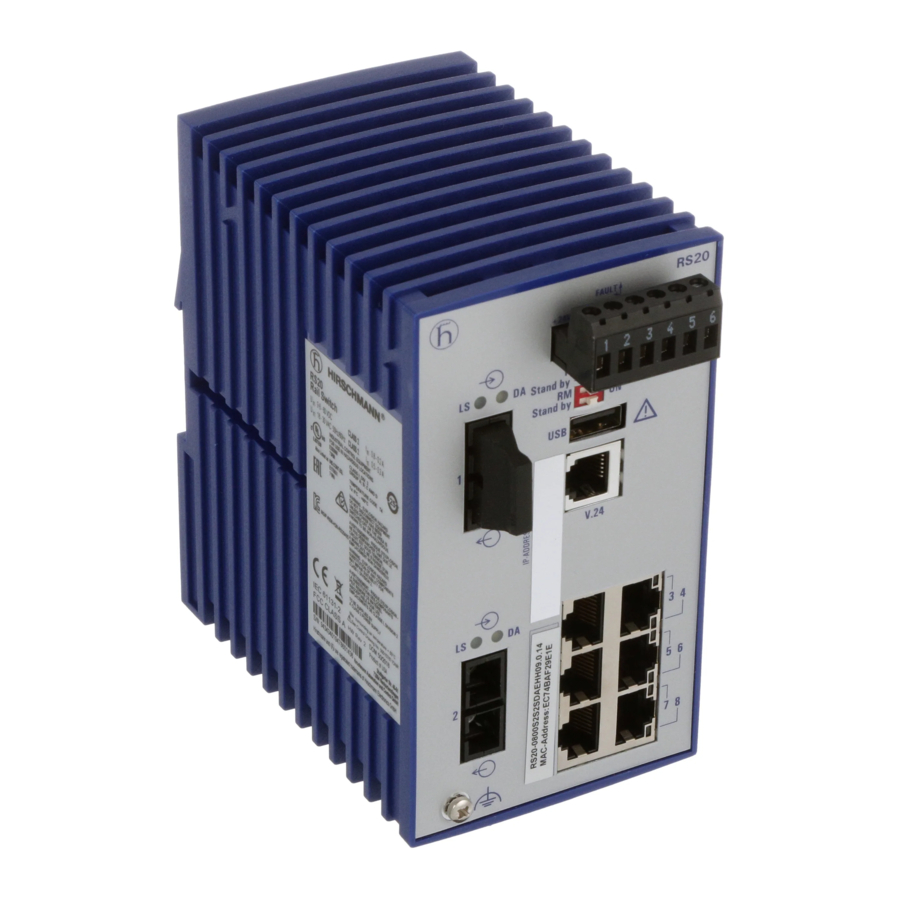
Hirschmann RS20 Reference Manual
Ethernet gigabit switch
Hide thumbs
Also See for RS20:
- Reference manual (396 pages) ,
- User manual (294 pages) ,
- Programming manual (116 pages)
Table of Contents

















Need help?
Do you have a question about the RS20 and is the answer not in the manual?
Questions and answers